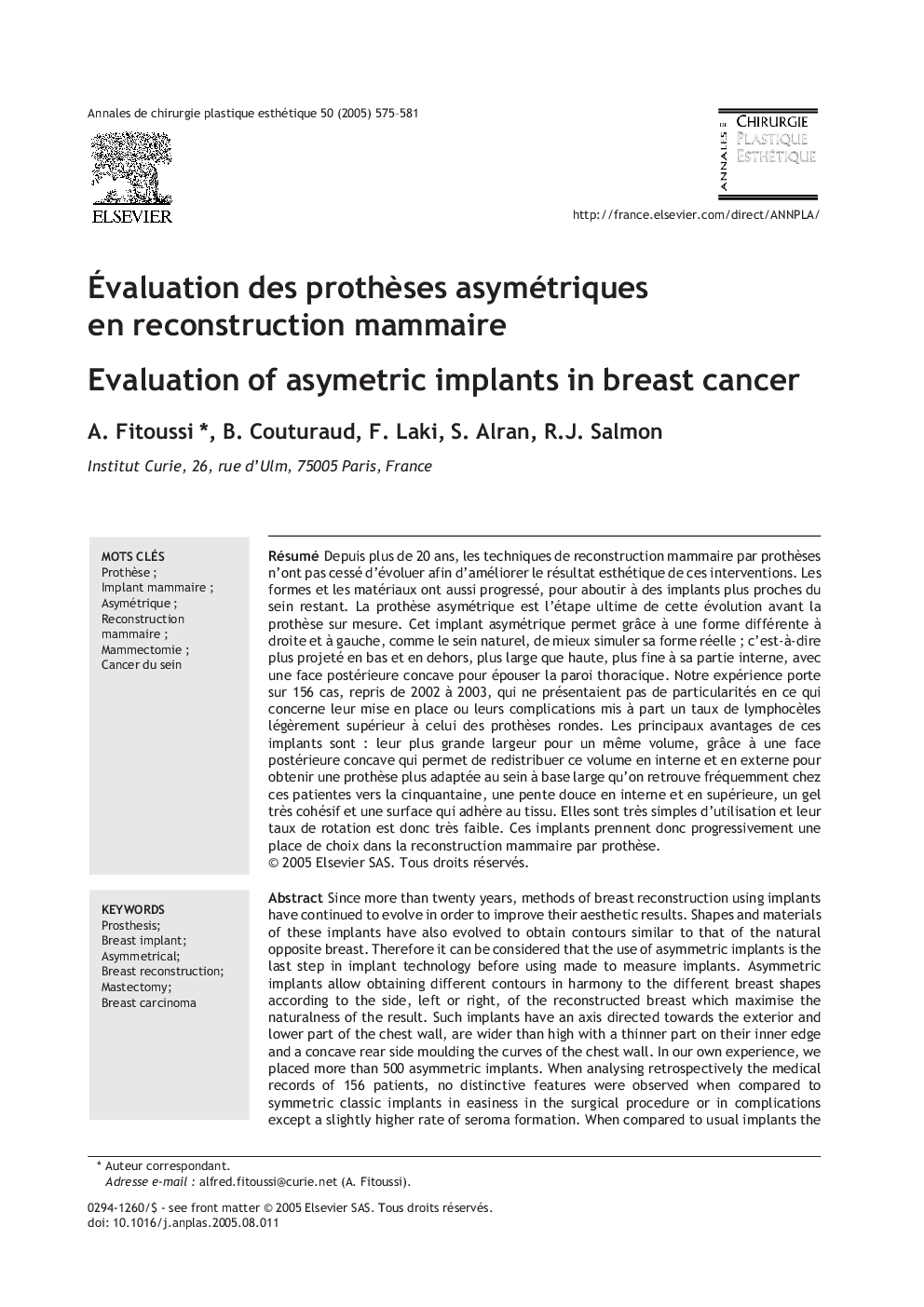| Article ID | Journal | Published Year | Pages | File Type |
|---|---|---|---|---|
| 9223352 | Annales de Chirurgie Plastique Esthétique | 2005 | 7 Pages |
Abstract
Since more than twenty years, methods of breast reconstruction using implants have continued to evolve in order to improve their aesthetic results. Shapes and materials of these implants have also evolved to obtain contours similar to that of the natural opposite breast. Therefore it can be considered that the use of asymmetric implants is the last step in implant technology before using made to measure implants. Asymmetric implants allow obtaining different contours in harmony to the different breast shapes according to the side, left or right, of the reconstructed breast which maximise the naturalness of the result. Such implants have an axis directed towards the exterior and lower part of the chest wall, are wider than high with a thinner part on their inner edge and a concave rear side moulding the curves of the chest wall. In our own experience, we placed more than 500 asymmetric implants. When analysing retrospectively the medical records of 156 patients, no distinctive features were observed when compared to symmetric classic implants in easiness in the surgical procedure or in complications except a slightly higher rate of seroma formation. When compared to usual implants the main benefits of asymmetric implants are: to offer a wider breadth, to slope down gently on their upper and inner sides according to their concave rear side, and therefore to better match subtle curves of a normal breast. Moreover such contours allow a distribution of the volume which fit better to the usual natural breast configuration of patients who underwent surgery for breast carcinoma. At last, such implants are easy to place and a very low rate of secondary rotation has been observed. In summary, for all these reasons, asymmetric implants, can be considered to be the class one in the choice of implants for breast reconstruction after breast surgery.
Keywords
Related Topics
Health Sciences
Medicine and Dentistry
Dermatology
Authors
A. Fitoussi, B. Couturaud, F. Laki, S. Alran, R.J. Salmon,
